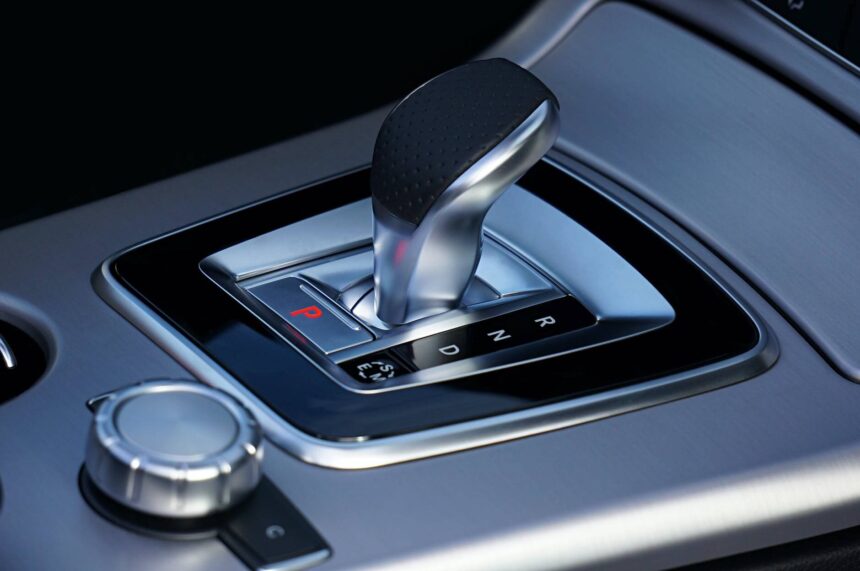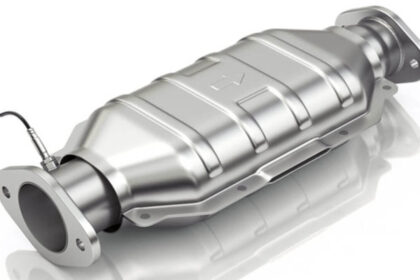A CVT transmission is an automatic transmission that uses a belt and pulleys to change the gear ratio instead of traditional gears. CVTs are becoming more popular in cars because they are more fuel-efficient and longer lifespan than conventional automatic transmissions.
However, like all mechanical devices, CVTs can fail and require repair or replacement. This article will explore what a CVT transmission is, how it works, how long it lasts, and what you can do if it fails.
Related: What to Do When Check Engine Light Comes on.
What is a CVT Transmission, and How Long Does it Last?
A CVT transmission is a car transmission that allows the driver to change gears without using a clutch.
It is also known as a Continuously Variable Transmission. How long does a CVT last? That depends on how well it is taken care of.
In this article, we will discuss what you can do to prolong the life of your CVT and what to do if it fails.
What is the Difference Between Automatic Transmissions and CVTs?
Automatic transmissions use a torque converter to connect the engine and transmission, while a Continuously Variable Transmission uses a belt or chain.
This allows them to use a system of pulleys that gives you more options for switching gears.
The downsides are that they typically have less power, your speed is limited by the number of pulleys installed, and more things can go wrong.
What is the Lifespan of CVT Transmissions?
The lifespan of a CVT varies considerably based on several factors, including how often it is serviced, how far you drive the car each day, and what kind of road conditions you put it through.
Most CVTs work for between 160934.4 and 241401.6 kilometers. Depending on the kind of car you drive, and where you live, there is a potential for more wear and tear on your vehicle than in other country areas. This means that getting your car serviced more often may be necessary.
Read also 10 Tips on How to Reduce Fuel Consumption.
What Causes the CVT to Fail?
Although a CVT is reasonably durable compared to other transmissions, you need to take care of it to last. If the car is not serviced regularly, then this can cause damage to the transmission and drastically reduce its lifespan.
In addition, leaving your vehicle idling while in gear or revving your engine hard when stalled can cause damage to the CVT belt.
This is why it’s essential to follow the instructions of your owner’s manual when driving your vehicle.
If your car has difficulty accelerating, keeps making a rattling sound, or keeps leaving you stranded, it may be time to have the problem assessed by a professional mechanic.
You should also consider taking it in as soon as possible if there is any unusual noise underneath the hood.
The most common causes of failure for a CVT are low fluid levels, metal particles contaminating the refilling oil, and power surges that cause damage to the belts or pulleys.
The last is typically caused by your car revving its engine too high when you already have it in high gear.
Also, read Why Your Car Shakes when Idle.
Symptoms of a Faulty CVT
Loss of power.
If your car is no longer accelerating usually, it may signify that your CVT has begun to fail.
Beeping or grinding sounds.
If your car begins to make a beeping or grinding noise when you accelerate, it could signify that the belt has become loose and is about to snap.
Center of Vehicle Vibrates.
You may notice excessive vibration in the center part of the vehicle if your CVT belt is about to snap.
Noise under the hood.
There may be a noise coming from under your hood if metal particles have got inside the transmission.
This grinding noise will worsen over time and eventually damage other parts of your engine.
Symptoms of Power Surge
If your car revs its engine extremely high while in high gear, then the power boost from the motor may cause damage to your transmission.
Low coolant warnings.
If your car begins overheating, you should take it to a service center as soon as possible. This could be due to several issues, including low coolant levels or damage to other components in the vehicle.
Stalling
If your engine stalls unexpectedly while you are driving, this is an indication that something may be wrong with your CVT transmission.
It does not necessarily mean it has entirely failed, but you should take your car to a service center for inspection.
CVT error code on the dashboard.
If your car’s dashboard displays a warning code indicative of a faulty CVT, you should take it to a service center for further inspection.
Grinding or screeching sounds.
If you hear a grinding or screeching sound while driving your vehicle, this could be due to a failing CVT transmission.
Transmission slipping: If you notice that your car is slipping out of its current gear, this may be due to damaged components in the transmission.
Transmission fluid leaking onto the ground
If your car begins to run low on transmission fluid, this could be a sign that it has already started to leak and needs immediate repairs. Fluid levels should always be kept at the recommended level.
See also 10 Signs You Need New Brakes for Your Car.
Tips on How to Get the Most Out of Your CVT Transmission:
CVT transmissions need to be serviced more often than regular vehicles because of the belts running all the time.
These belts also require more stringent maintenance than standard engine components. This is why it’s essential to make sure you get your vehicle serviced according to manufacturer instructions, which typically means at least once every 30,000 miles.
- Keep your CVT transmission fluid levels full and check them regularly to ensure no leaks or contamination from particles.
- It’s also recommended to have the fluid changed every 30,000 miles or sooner if it becomes contaminated or dark in color due to wear.
- Notice that your CVT begins to make unusual noises or feels like it’s slipping. You should get your vehicle serviced as soon as possible and don’t drive it until a professional mechanic has resolved the problem. It may be challenging to locate a CVT specialist, so you may have to search for one.
Other Tips for Extending the Life of a CVT:
- Avoid driving your vehicle for long periods while in low gear. People make a common mistake while operating their vehicles off-road or going uphill.
- Do not drag your brakes, and always maintain an appropriate speed if you need to stop driving uphill on a slope. Press harder on your accelerator and don’t slow down by dragging your brakes or letting your car turn off, as this can also cause damage to the transmission.
- Do not use cruise control while going uphill. This is another mistake drivers often make while driving their vehicles off-road, but it can also cause damage to your CVT belt or other components if you are trying to accelerate uphill.
- If possible, avoid driving your vehicle through deep water, as this can cause problems.
- If your car is equipped with a manual transmission, you must never shift gears while your vehicle is stationary and the engine is running. Even if you’re driving your vehicle on flat land, this can cause damage to both your transmission and clutch.
Many manufacturers don’t recommend towing a vehicle with a CVT as it can cause damage (especially for Nissan and Honda models).
If you notice any of these issues while driving your car, bring it to a professional transmission repair service for evaluation and assistance.
Should You Buy a CVT Car?
There is no simple answer to that question. It’s a matter of personal preference and research.
If you decide to buy a car with a CVT, be sure to ask how often it needs servicing, what kinds of problems are common, and how much it will cost to have the warranty honored.
Costs of Repairing or Replacing a Faulty CVT.
Repairing a faulty CVT transmission can cost anywhere from $1,000 to $5,000, depending on the kind of car you drive and where you live. It may reduce these costs by checking out local repair shops to compare prices and quality.
You may also read: What to Check When Buying a Used Car in Kenya.
Other Parts that can Cause Problems with your Vehicle’s Performance.
Different automakers use different parts for their CVTs, so it is essential to ask what kind of oil is required, how often the belt should be replaced, and if there are any special considerations you need to keep in mind when it comes to your engine.
In conclusion, a CVT is a powerful and exciting part of driving that can take you wherever you need to go.
However, it is just one piece of the puzzle, and other areas may cause problems if they aren’t taken care of or develop issues with time.
So please keep up with your regular maintenance and remember that it is always better to be safe than sorry!













